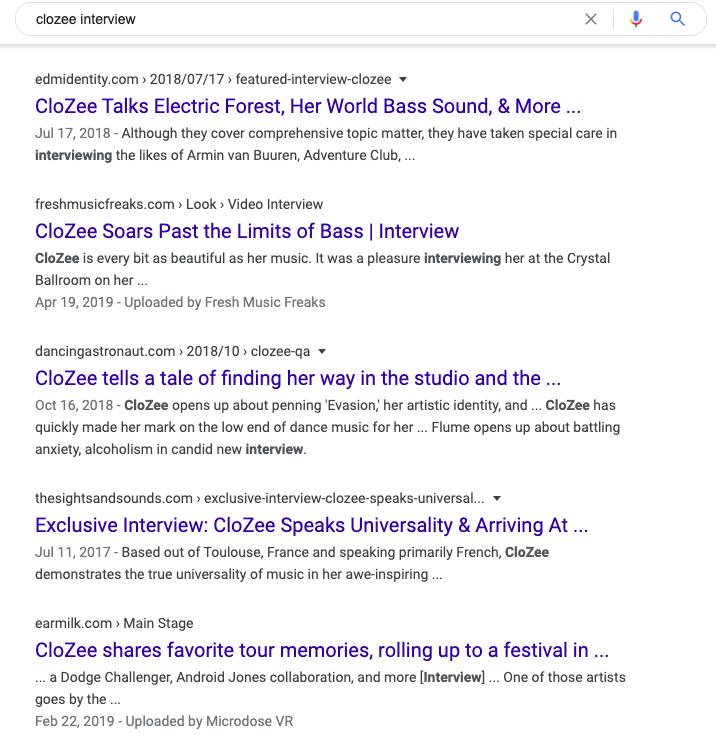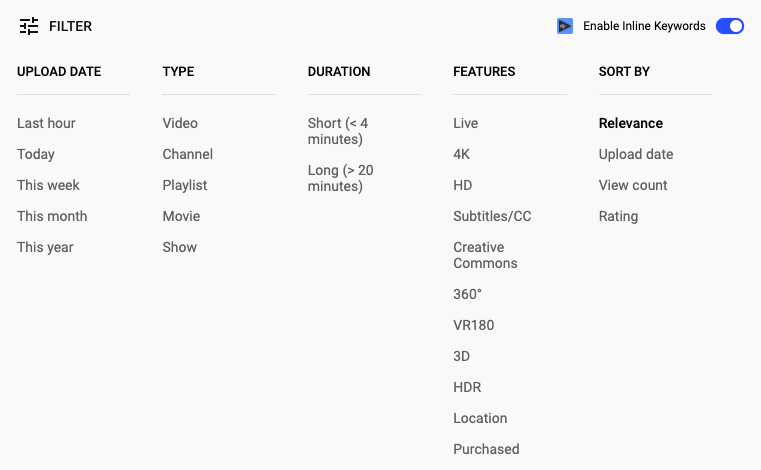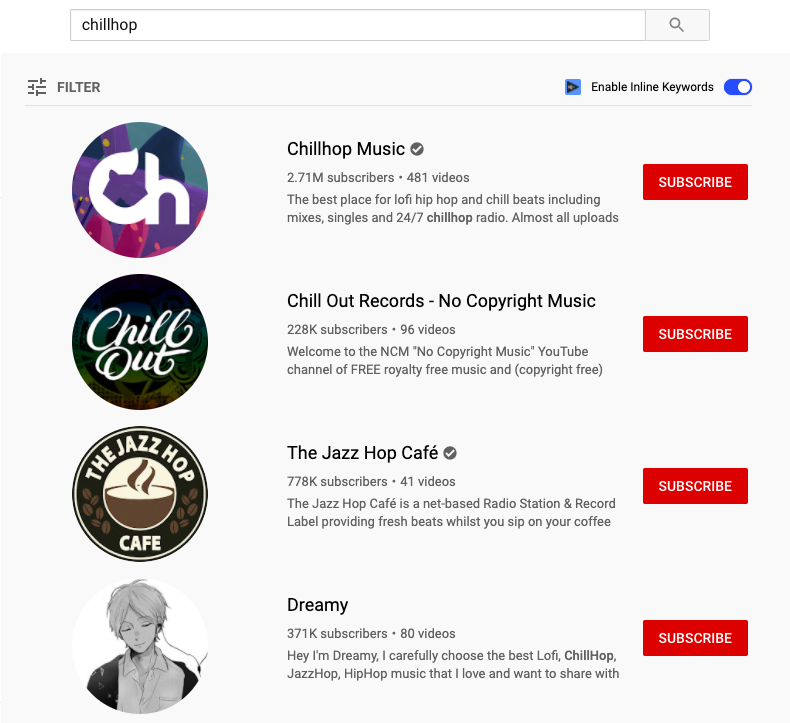The Art of Outreach:
I. Acquiring Targets 101 – Learn how to find appropriate blogs and YouTube channels to target.
II. Finding Contacts 101 – Learn how to find the emails of tastemakers you want to specifically pitch.
III. The Perfect Pitch 101 – Learn how to craft the perfect pitch email to send to contacts.
Why Outreach?
When it comes to releasing new music, outreach should not be overlooked. In this day and age, a strong online presence can significantly impact a brand for the better. One way to ensure your music achieves maximum exposure is through a mixture of editorial posts and YouTube channel features. Although nothing is ever guaranteed, these types of features can provide a multitude of benefits, such as an increase of streams and fans.
Even if outreach doesn’t yield thousands of new streams or fans, high amounts of coverage come in handy when pitching to festival talent buyers, local promoters, and playlist curators. Generally speaking, the more buzz around you, the more opportunities you may be afforded. It is important to note that public relations should not be the end all be all, and you shouldn’t bank on this alone. Although it is an important piece to the puzzle of an artist’s overall strategy, it should be only a fraction of the focus. Other items such as playlists, email execution, and social media marketing are other items that should be accounted for.
The Reality of Outreach
PR is a challenging task. There is a reason why there are agencies and full-time professionals dedicated to the art; it’s because a lot of outreach is relationship-based. From this, two main questions may come up: How do you develop relationships with writers if you haven’t worked with them yet? And how can you work with them if you haven’t developed a relationship? It can seem like the chicken and the egg. Don’t let this deter you though, if this is something you want to tackle head on.
Pitching in electronic music is generally a lot simpler than pitching mainstream media such as US Magazine or PEOPLE. This is a huge reason why outreach was so complicated to me when I began, since I had zero prior knowledge of the media landscape when I began. I would look up resources online and feel stuck because the majority of articles did not apply to my particular situation. Most music bloggers are volunteers and write in their free time, as opposed to bigger publications that have an office and paid staff. Of course, if you’re pitching to Billboard or EDM.com, it’ll take a more vigorous approach versus if you were pitching to Raver Rafting or Bass Feeds The Soul. Since I began outreach in June of 2019, I have learned so much about outreach, general etiquette, etc. This is why I am here now to help you. How can you set yourself up for success in the media landscape as an electronic artist? If you want to invest the time to be your own publicist, it’s definitely possible and I want to share my secrets of success, step by step.
Let’s start from the beginning to kick things off. Before we even talk about what to say in your pitch and how to find emails, let’s begin with finding where you want to pitch to. To make things simple, let’s pretend you have never had editorial or YouTube support and don’t know any tastemakers.
Discovering Blog Targets
It’s hard to pitch to writers if you don’t know any music blogs. If you’re finding yourself stuck on discovering where to even pitch, these are my main strategies:
If you have a particular sound that sounds like another artist, use that as a reference point. When I was working with Lil Fish, who had a world bass sound, I would look up “CloZee interview” and “CloZee review.” Additionally, I would search “CloZee Harmony,” “CloZee Evasion,” etc. for particular reviews on specific releases. Since I know the writer and the outlet has covered her before, the chances they would be open to listening to Lil Fish was much greater. It’s harder to do this strategy with certain artists, depending on how hard to Google their name may be. For example, I couldn’t easily look up “Brightside interview” or “Brightside review” because there were too many other non-music related results that included “Brightside.” That’s why I typically stick to distinctive names or use release titles alongside it to find additional outlets.

Searching Twitter or Facebook for keywords such as “[artist] interview,” “[artist] review,” etc. has been relatively helpful. One word of warning is that many of the results may have inactive sites and it’s the strategy I personally use the least.
Use your genre as your keyword. If you have a genre that is easily searchable, such as chillhop, you can simply search “chillhop blogs” in Google or social media and see what pops up.
Visit relevant PR companies’ social media accounts and see who has recently supported or covered their artists. After you’re aware of these new outlets, you can do some research on which writer there may be interested in your music.
Discovering YouTube Targets
When it comes to YouTube, finding channels can be tricky, especially if you don’t know how to classify your music. I find YouTube channels are much more precise on maintaining the same vibe of their content versus a writer who may write about any genre under the sun. Because of this, it’s important to not blindly pitch any channel, even if they say they post electronic music. There are several channels that have things in their bio such as “for all things EDM,” but when I listen to the videos featured, they are almost all some form of house. Because of this, make sure to listen to five or six tracks to get a feel for what type of music they accept. Here are some strategies that I use to find new YouTube channels:
If you know what genre your music is considered, such as dubstep, simply type that into the YouTube search bar. Depending what comes up, you can click on the channel for the song(s) that pop up. If you click on “filter,” it’ll include channels with that keyword. Usually, the first channels that pop up tend to only have 4 subscribers. To get the maximum benefit, include a filter on “view count” so you get the more popular channels with the keyword “dubstep” in the title. One major withdraw is that many tend to be inactive, but you can use various keywords and go down the rabbit hole. The filter buttons have done me wonders when searching for new targets.

If you know an artist you identify closely to, use that to help discover new channels. For example, if you’re more into chillhop, look up Cloudchord on YouTube. Instantly, you’ll get a large amount of channels that have featured Cloudchord’s music before. This is a great strategy, however a big issue is that uploads could be from years ago, and the channel isn’t active anymore. To discover even more channels, use Cloudchord in the search bar, but sort it by upload date. Then, you’ll see channels that had most recently uploaded his music, which indicates they are still active.

Once you’ve located a channel, other ways to discover more channels is to look at their featured channels tab on the side. They usually will include other channels that fall under their umbrella (ie. how The Nations are part of one family) and other related channels that they may not be directly connected to but are similar with.
Okay, What Next?
Once you have these blogs, input them into a master list where all of your links and contacts will live. Here is an example of what I use to organize my list. It’s important to include the genre within the notes so you’re not revisiting the sheet weeks later, unable to remember who covers what genre. It’s hard to always stick music inside of a certain genre box, but for organization sake, it’s a lifesaver.
Finding the outlet you want to pitch to is usually only half the battle. Sometimes, emails of the people you want to connect with are not openly shared anywhere. Personally, I would advise against pitching anyone via social media. If I absolutely cannot find the contact, I will sometimes reach out and request if they have an email I can send music to, but do not send a social media message with unsolicited music before you get permission. For my next blog post, I will share with you how to locate these squirmy and evasive emails.

Well written, informative article! No nonsense, straight to the point, and I love it!